Plan your Japan trip without
the overwhelm
What Are Onsen? Why Hot Springs Are a Must-Do in Japan 🛁🇯🇵

If you’re planning a trip to Japan, there’s one experience you absolutely shouldn’t skip: bathing in an onsen. These traditional hot springs are more than just relaxing they’re an essential part of Japanese culture and wellness.
What Exactly Is an Onsen?
In Japanese, “onsen” (温泉) literally means hot spring. But it’s not just any hot water. Onsen water is naturally heated by geothermal energy and packed with minerals like sulfur, calcium, and magnesium—each believed to offer different health benefits.
There are two main types:
Indoor onsen: Often modern and cozy, found in ryokans or hotels.
Rotenburo (露天風呂): Open-air baths surrounded by nature—think mountains, forests, or even snow in winter.
Why Are Onsen So Popular in Japan?
🧘 1. Health & Relaxation Benefits
Depending on the minerals in the water, onsen bathing may help:
Relieve muscle and joint pain
Improve blood circulation
Soothe skin conditions (like eczema or irritation)
Reduce stress and support better sleep
Basically, it’s a natural spa treatment.
🛁 2. A Ritual of Mindfulness
Onsen aren’t just about getting clean—they’re about slowing down.
Before entering the bath, you’ll wash your body completely at a shower station. This ritual is part of the culture and shows respect for others.
🏯 3. A Window Into Japanese Tradition
Onsen bathing has existed for centuries. Samurai, monks, and villagers all soaked in hot springs for health, recovery, and connection. Many onsen towns still carry this timeless atmosphere.
🌿 4. Immersed in Nature
Soaking in an outdoor bath while surrounded by forests, mountains, or snowfall? Pure magic.
Rotenburo (open-air baths) are all about harmony with nature, and it’s one of the reasons onsen remain so beloved.
👥 5. For Social or Solo Moments
You can visit an onsen with friends or family, or go alone to relax in silence.
It’s a place to disconnect—from your phone, your stress, your daily routine.
Onsen Etiquette: What You Need to Know
To enjoy the experience without faux-pas:
✅ Wash before entering (fully wash & rinse at the shower station)
🚫 No swimsuits (yes, you bathe nude—but it’s totally normal in Japan)
🤫 Stay quiet (it’s meant to be peaceful)
💬 Tattoos: Some onsen still restrict tattoos—check in advance. Many now accept them or provide cover-up stickers.
Types of Onsen to Try
Rotenburo (露天風呂): Outdoor baths with nature views
Ashiyu (足湯): Foot baths found in public spaces—great if you're shy!
Suna-yu: Sand baths where you're buried in warm volcanic sand
Doro-yu: Mud baths with skin-healing properties
Sentō (銭湯): Public bathhouses—less traditional but more casual
Best Onsen Towns in Japan
If you're ready to try the real thing, here are some of the most iconic onsen destinations:
Hakone: Easy access from Tokyo + views of Mount Fuji 🌄
Beppu: Known for wild hot spring steam & variety of bath types
Kusatsu: Famous for strong sulfur waters and traditional cooling ritual
Arima Onsen: Near Kobe, with “golden” and “silver” mineral baths
Gero Onsen: Mountain vibes and one of Japan’s top 3 onsen towns
Onsen aren’t just baths they’re a cultural and spiritual tradition that connects you to centuries of Japanese life. Whether you’re going for the wellness, the scenery, or the experience itself, you’ll walk away lighter, calmer, and refreshed.
💼 Why Choose My Ready-to-Go Itineraries?
Planning a Japan trip can get overwhelming. I lived in Japan and built the kind of guide I wish I had at the beginning. Here’s what you get:
✅ Clear day-by-day routes 100% customizable
✅ Local spots, not just the touristy ones
✅ Interactive map & Direct Google Maps links
✅ Tips on transport, food, and stays
✅ Works offline. Saves you 100+ hours of research
💌 Get Your Japan Itinerary Now Travel Japan with clarity. No stress. No chaos. Just the adventure, made easy.

Marie creator behind @Tabimawari
Hi, I’m Marie.
French islander from Reunion island, Japan lover, and travel planner behind Tabimawari.
I spent a year living in Kyoto, learning Japanese and falling in love with the culture. Since then, I’ve kept going back, exploring every corner from Tokyo to the tiniest hidden towns.
I created these guides after spending months planning, testing, and fine-tuning every detail so you don’t have to. Inside, you’ll find:
✅ Interactive maps
✅ Step-by-step directions
✅ Local spots + travel tips
✅ Offline use
Each guide is made with care, based on real-life travel, not generic blog advice.
This is what I wish I had on my first trip to Japan and now it’s yours.
MY SOCIALS
MY NEWSLETTER
Japan Monthly by Tabimawari : Subscribe to get a monthly email packed with inspiration, local tips, and events happening across Japan straight from someone who’s lived and traveled a lot.

Marie creator behind @Tabimawari
Hi, I’m Marie.
French islander from Reunion island, Japan lover, and travel planner behind Tabimawari.
I spent a year living in Kyoto, learning Japanese and falling in love with the culture. Since then, I’ve kept going back, exploring every corner from Tokyo to the tiniest hidden towns.
I created these guides after spending months planning, testing, and fine-tuning every detail so you don’t have to. Inside, you’ll find:
✅ Interactive maps
✅ Step-by-step directions
✅ Local spots + travel tips
✅ Offline use
Each guide is made with care, based on real-life travel, not generic blog advice.
This is what I wish I had on my first trip to Japan and now it’s yours.
MY SOCIALS
MY NEWSLETTER

Plan your Japan trip without
the overwhelm
Follow me
Newsletter
Japan Monthly : Subscribe to get a monthly email packed with inspiration, local tips, and events happening across Japan straight from someone who’s lived and traveled a lot.


